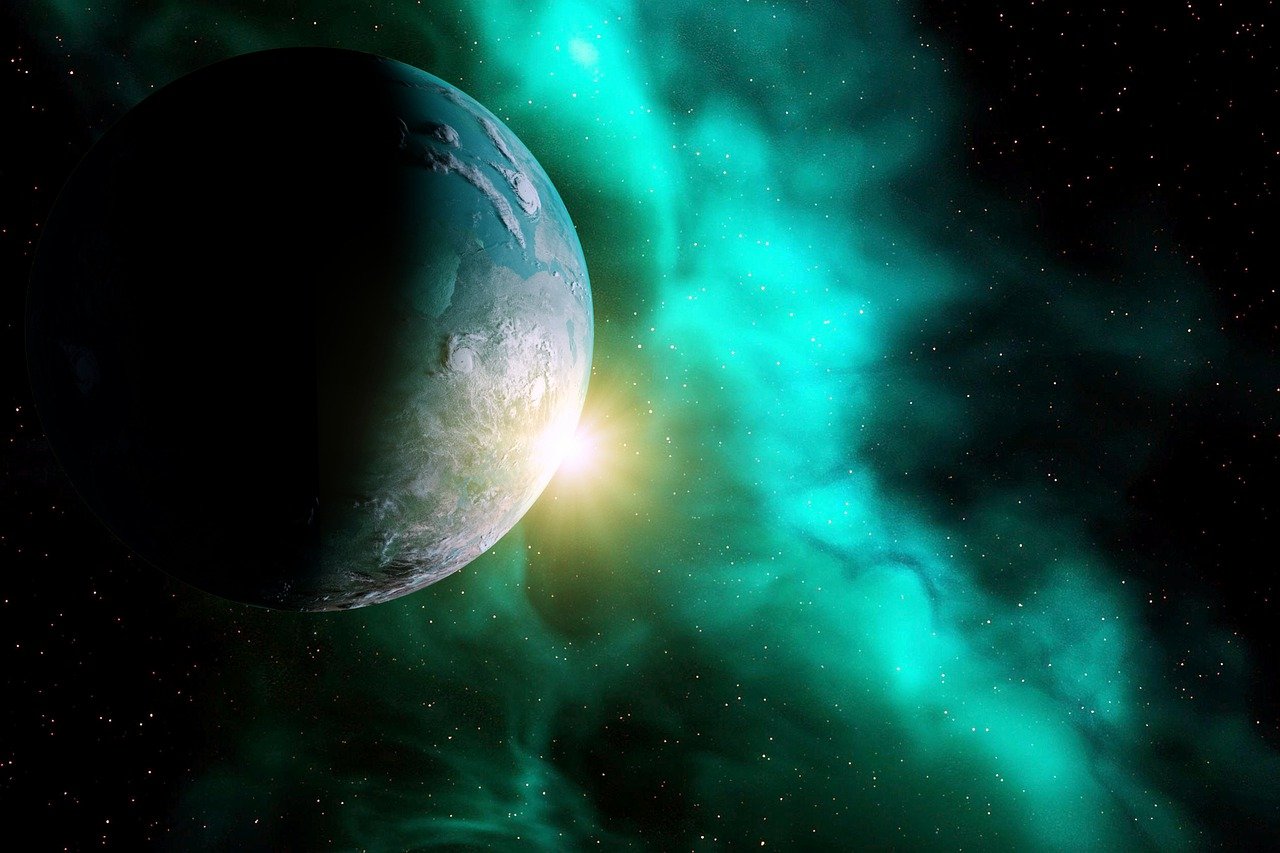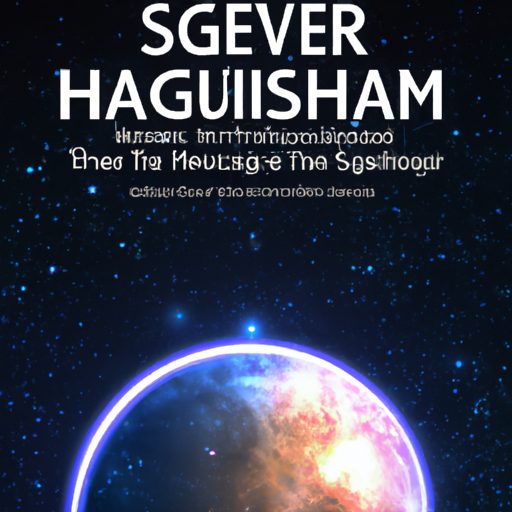Are you fascinated by the mysteries of the universe? If so, look no further! “A Beginner’s Guide To Understanding Cosmology: Exploring The Universe” is here to take you on an awe-inspiring journey into the depths of space. This article aims to provide a comprehensive overview of cosmology, making complex concepts accessible to newcomers. From the Big Bang theory to the structure of galaxies, prepare to have your mind expanded as we delve into the wonders of the cosmos. So, step out of this world and embark on an adventure of discovery!

What is Cosmology?
Defining cosmology
Cosmology is the branch of science that seeks to understand the origin and evolution of the universe as a whole. It investigates the fundamental questions about the Universe, such as its structure, composition, and overall behavior. By studying the universe on the largest scales, cosmologists aim to uncover the mysteries of its past, present, and future.
Scope of cosmology
The scope of cosmology is vast and encompasses various areas of study. It combines knowledge from physics, astronomy, and astrophysics to provide a comprehensive understanding of the universe. Cosmologists explore the origin of the universe, the expansion of space, the formation of structures like galaxies and clusters, the life cycles of stars, the nature of black holes, the presence of dark matter and dark energy, and the quest for a unified theory of everything. By examining these interconnected topics, cosmologists piece together the puzzle of our cosmic existence.
Origins of the Universe
The Big Bang theory
The Big Bang theory is the prevailing explanation for the origin of the universe. It suggests that the universe began as an incredibly hot and dense point, also known as a singularity, approximately 13.8 billion years ago. According to this theory, the universe rapidly expanded and cooled down, giving rise to the creation of matter, energy, and the fundamental forces that govern our universe today. The Big Bang theory provides a framework for understanding the formation of stars, galaxies, and the subsequent evolution of the cosmos.
Inflation theory
Inflation theory is an extension of the Big Bang theory that attempts to explain the uniformity, flatness, and large-scale structure of the universe. It proposes that the universe underwent a period of rapid expansion, known as cosmic inflation, in the moments following the Big Bang. This rapid expansion stretched the fabric of spacetime and smoothed out irregularities, resulting in the remarkably uniform distribution of matter across the universe that we observe today. Inflation theory provides a solution to several long-standing puzzles and is considered a key component of our understanding of the early universe.
Multiverse theory
Multiverse theory speculates that our universe is just one of many universes within a larger “multiverse.” It suggests that there are countless other universes, each with its own set of physical laws and conditions. The concept of a multiverse arises from the mathematical frameworks used to describe the universe, such as string theory and quantum mechanics. While the existence of a multiverse is still a topic of debate and exploration, it offers a fascinating possibility that our universe is just a tiny piece of a much grander cosmic tapestry.
Expansion of the Universe
How the universe is expanding
The expansion of the universe refers to the notion that the space between galaxies is continually stretching, causing them to move away from each other. However, it is important to clarify that this expansion is happening on a much larger scale than what we typically observe within our local galaxy or even galactic cluster. The fabric of space itself is expanding, carrying galaxies along with it. As a result, the universe is becoming less dense over time, and the distances between galaxies continue to increase.
Hubble’s law
Hubble’s law, formulated by astronomer Edwin Hubble in the 1920s, describes the relationship between the distances of galaxies and their redshifts, which is caused by their motion away from us. Hubble noticed that, on average, galaxies that are farther away appear to be receding at higher speeds. This relationship led to the realization that the universe is not simply expanding, but that the rate of expansion is accelerating with time. Hubble’s law provides a key piece of evidence for the Big Bang theory and the presence of dark energy.
Dark energy
Dark energy is a hypothetical form of energy that is thought to be responsible for the accelerated expansion of the universe. It is believed to constitute a significant portion of the total energy budget of the universe, even though its nature remains elusive. Dark energy is characterized by its negative pressure, which opposes gravity and causes the universe to expand at an ever-increasing rate. While dark energy remains a mystery, scientists continue to study its properties and its role in shaping the fate of the cosmos.
Cosmic Microwave Background
Discovery of the CMB
The Cosmic Microwave Background (CMB) is a faint residual radiation that permeates the entire universe. It was first discovered in 1964 by Arno Penzias and Robert Wilson and later explained by the Big Bang theory. The CMB is composed of photons that have been traveling since the universe became transparent to light, about 380,000 years after the Big Bang. It represents a snapshot of the universe in its infancy and provides valuable insights into the conditions and properties of the early universe.
Significance of the CMB
The CMB holds immense significance in cosmology. Its uniformity and consistency across the sky support the hypothesis that the universe was once in a hot, dense state. It also serves as evidence for the Big Bang theory, as it corresponds to the afterglow of the initial explosion. By studying the CMB, cosmologists can analyze tiny fluctuations in temperature, which provide crucial information about the distribution of matter, the formation of galaxies, and the evolution of cosmic structures over billions of years.
Properties of the CMB
The CMB exhibits specific properties that have profound implications for our understanding of the universe. It has a nearly perfect blackbody spectrum, which means that its energy distribution follows a specific pattern. The CMB has a temperature of approximately 2.7 Kelvin, making it one of the coldest forms of radiation in the universe. Its anisotropy, or slight variations in temperature, allows scientists to map out the distribution of matter during the early stages of the cosmic evolution. The properties of the CMB provide valuable clues about the structure and composition of the universe.

Formation of Structures
Clusters, superclusters, and filaments
The formation of structures in the universe is a consequence of the gravitational interactions between matter and dark matter. At a large scale, matter clumps together to form structures such as galaxy clusters, superclusters, and filaments. Galaxy clusters are massive collections of galaxies held together by gravity, while superclusters represent larger-scale formations consisting of multiple clusters. Filaments are long, thread-like structures that connect different clusters and superclusters. These structures arise due to the attraction of dark matter and serve as the backbone of the cosmic web.
Role of dark matter
Dark matter plays a crucial role in the formation of structures in the universe. While its nature remains unknown, the gravitational influence of dark matter is clear. It provides the gravitational scaffolding upon which regular matter can accumulate and form galaxies, clusters, and other cosmic structures. Dark matter’s influence is believed to be five times that of regular matter, making it a significant driver of cosmic evolution. Its presence is inferred through its gravitational effects, as it does not interact with light or other electromagnetic radiation.
Formation of galaxies
Galaxies, the building blocks of the universe, are formed through a combination of processes. Tiny fluctuations in the density of matter, imprinted on the early CMB, are amplified over time by gravity. As matter collapses under its own weight, regions of higher density form the seeds for galaxy formation. These regions attract gas and dust, which condense to form stars. Over millions of years, galaxies grow and evolve through mergers with other galaxies, the accretion of gas and dust, and the formation of new stars. The study of galaxy formation provides insights into the evolution of structures in the universe.
Stellar Evolution
Birth and life cycle of stars
Stars undergo a fascinating journey from their birth to their eventual death. Stellar birth occurs in vast molecular clouds, where gravity causes the compression of gas and dust. As the cloud collapses, it forms a protostar, a dense core that continues to accrete mass from surrounding material. Eventually, the core reaches a critical temperature and pressure, igniting nuclear fusion. This marks the beginning of a star’s main-sequence phase, where it burns hydrogen to helium in its core. The duration and fate of a star depend on its mass, with more massive stars having shorter lives.
Nuclear fusion
Nuclear fusion is the process that powers stars. In the core, the extreme heat and pressure cause hydrogen nuclei to collide and combine, forming helium nuclei and releasing vast amounts of energy. This energy provides the outward pressure that counteracts gravity, maintaining the star’s equilibrium. Different stars undergo different fusion processes based on their mass, with larger stars potentially fusing heavier elements like carbon, oxygen, and even iron. The balance between fusion reactions and gravitational forces determines a star’s stability and eventual fate.
Supernovae
Supernovae are powerful explosions that mark the violent deaths of massive stars. When a massive star runs out of nuclear fuel, its core collapses under gravity’s relentless pull. This collapse triggers an explosive rebound, known as a supernova. The explosion catapults the outer layers of the star into space, releasing an enormous amount of energy, including heavy elements forged within the star. Supernovae are responsible for dispersing these elements throughout the universe, enriching the interstellar medium and providing the raw materials for future generations of stars and planetary systems.

Black Holes
Nature of black holes
Black holes are extreme cosmic objects with gravitational fields so strong that nothing, not even light, can escape their grasp. They are formed from the remnants of massive stars that have undergone a supernova explosion. Black holes are characterized by their event horizons, which represent the boundary beyond which no information can escape. Inside the event horizon, spacetime becomes infinitely curved, leading to a singularity of colossal density at the center. While the exact nature of black holes remains a subject of ongoing research, their existence is supported by strong observational evidence.
Formation of black holes
Black holes form when massive stars exhaust their nuclear fuel and collapse under their own gravity. If the core of a star is at least three times more massive than our Sun, the collapse is so severe that it overcomes any counteracting forces, creating a black hole. As gravity crushes the star’s core, it becomes denser and denser until it forms a singularity, a point of infinite density within the event horizon. The formation of black holes is a breathtaking process that underscores the extreme nature of these enigmatic cosmic objects.
Event horizon
The event horizon is a defining feature of black holes. It represents the boundary beyond which no information can escape, trapping everything within its grasp. Once an object crosses the event horizon, it is inexorably pulled toward the singularity at the center of the black hole, where the laws of physics as we know them break down. The event horizon acts as a point of no return, forever separating the interior of the black hole from the outside universe. It is a concept that underscores the extraordinary nature of these celestial phenomena.
Dark Matter
What is dark matter?
Dark matter is a mysterious substance that does not interact with light or other electromagnetic radiation, making it difficult to detect directly. Its existence is inferred from the gravitational effects it produces on visible matter and starlight. Dark matter is estimated to account for around 27% of the total mass-energy content of the universe, surpassing the amount of regular matter. Despite its significant presence, its exact composition and properties remain unknown, forming one of the most significant puzzles in modern cosmology.
Evidence for dark matter
While dark matter itself eludes direct observation, its existence is supported by a range of observational and theoretical evidence. The rotation curves of galaxies, the motion of galaxy clusters, and the bending of light by gravity all point to the presence of additional mass beyond what is visible. The clustering of galaxies and the growth of cosmic structures also align with the gravitational effects of dark matter. Scientists have ruled out alternative explanations, leading to the compelling conclusion that dark matter must exist, even though its true nature remains a mystery.
Types of dark matter
Several candidates have been proposed for the nature of dark matter, but none have been definitively confirmed. One leading candidate is a type of particle called a Weakly Interacting Massive Particle (WIMP). WIMPs are hypothetical particles that interact only through the weak nuclear force and gravity, making them difficult to detect directly. Another candidate is known as axions, which are extremely light and would have unique properties that contribute to the formation of cosmic structure. Scientists are actively conducting experiments to detect and identify dark matter, with the hope of shedding light on this enigmatic substance.

Dark Energy
Understanding dark energy
Dark energy is a perplexing form of energy that is thought to pervade all of space and contribute to the accelerated expansion of the universe. It constitutes around 68% of the total mass-energy content of the universe, surpassing both dark matter and regular matter. Dark energy is characterized by its negative pressure, which counteracts the attractive force of gravity and causes the universe’s expansion to accelerate. While its true nature remains unknown, scientists theorize that dark energy may be an inherent property of space itself or arise from vacuum fluctuations at the quantum level.
Role of dark energy in the universe
Dark energy plays a crucial role in the fate of the universe. Without its presence, the gravitational pull of matter and dark matter would eventually slow down and reverse the universe’s expansion. However, dark energy’s negative pressure acts as a repulsive force that counterbalances gravity, causing the expansion to accelerate. This acceleration means that the universe will continue to expand indefinitely, potentially leading to an eventual fate known as the “Big Freeze,” where the universe becomes cold and sparse. Dark energy’s dominance raises fundamental questions about the nature of our universe and its ultimate destiny.
Current theories
Scientists are actively exploring various theories to explain the nature of dark energy. One possibility is that dark energy arises from a fundamental property of space, referred to as a cosmological constant. According to this theory, empty space possesses energy that contributes to the universe’s expansion. Another hypothesis is that dark energy is a dynamic, evolving field known as quintessence. Quintessence would vary over time, causing changes in the rate of expansion. As researchers continue to study the acceleration of the universe, they strive to understand the true nature and origin of dark energy.
Theories of Everything
Seeking a unified theory
Theories of Everything seek to reconcile the fundamental forces of nature, namely gravity, electromagnetism, and the strong and weak nuclear forces, into a single unified framework. Scientists aspire to find a single equation or set of principles that can explain the behavior of all particles and interactions in the universe. Such a theory would provide a complete understanding of the cosmos, from the subatomic realm to the vast expanse of the universe. While the search for a Theory of Everything is ongoing, it represents one of the grandest challenges in physics and cosmology.
String theory
String theory is one promising candidate for a Theory of Everything. It proposes that all fundamental particles are not point-like entities but tiny vibrating strings of energy. These vibrating strings give rise to different particles and their unique properties. String theory also suggests the existence of extra spatial dimensions beyond the three we experience in everyday life. While string theory has made significant strides in explaining certain phenomena, it remains a work in progress, and many aspects of the theory are still being explored and refined.
Quantum gravity
Quantum gravity is another avenue towards a unified theory. It seeks to merge the principles of quantum mechanics, which describe the behavior of particles on the smallest scales, with the theory of general relativity, which explains gravity and the large-scale structure of the universe. The challenge lies in reconciling the discrete and continuous nature of these two theories. Quantum gravity explores the nature of spacetime at its tiniest scales and aims to provide a consistent framework that incorporates both quantum mechanics and gravity. While progress has been made, a complete theory of quantum gravity remains an open question in modern physics.
In conclusion, cosmology is a vast and captivating field that seeks to unravel the mysteries of the universe. From the origin of the universe through the Big Bang and inflation to the formation of structures like galaxies and black holes, cosmologists explore the fundamental aspects of our cosmic existence. Dark matter and dark energy present intriguing puzzles that challenge our understanding of the universe’s composition and expanding nature. The quest for a Theory of Everything, whether through string theory or quantum gravity, demonstrates our desire to unify the fundamental forces and laws that govern the universe. As we delve deeper into the wonders of cosmology, we gain invaluable insights into the nature, history, and potential future of our vast and awe-inspiring cosmos. So embark on this cosmic journey, and let the wonders of the universe unfold before you – the key to understanding our place in this grand cosmic ballet.